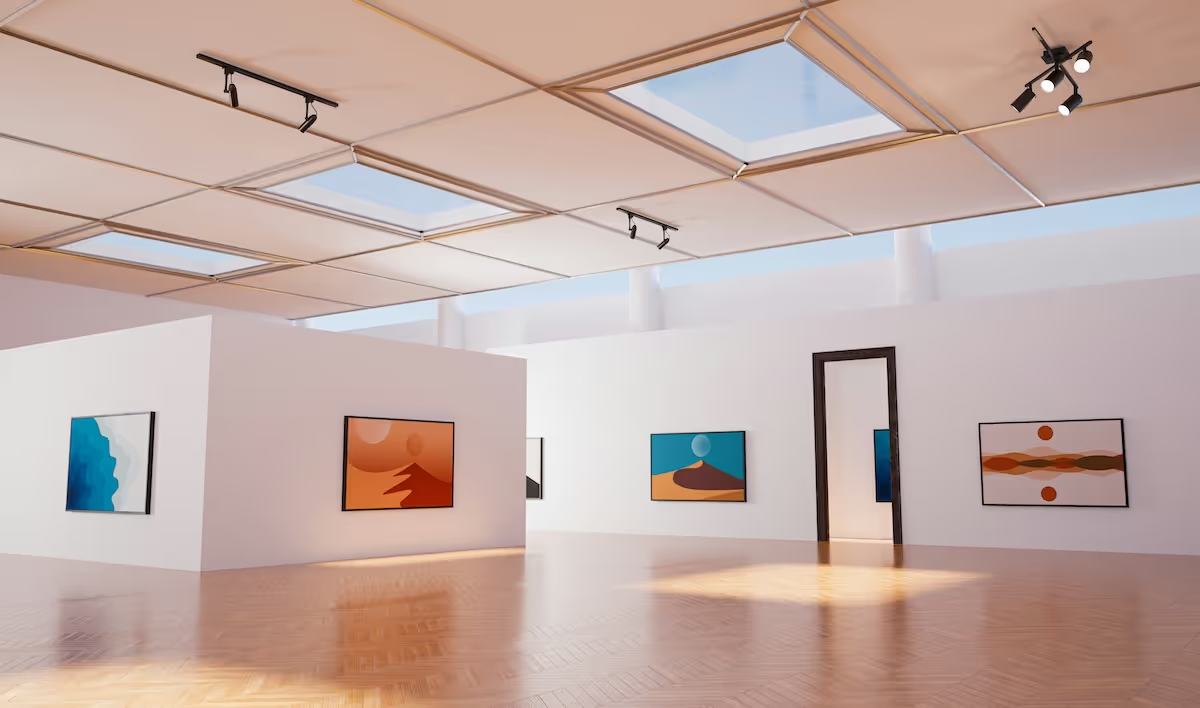Art Basel Paris 2024: Art fair as a market barometer

You might think that art fairs are completely out of the ordinary in times of AI, NFT, and digital exhibitions. On the one hand because they cost organizers and galleries a lot of money, and on the other hand because long journeys are becoming increasingly unpopular in times of climate change and high costs. But the third edition of Art Basel Paris was a resounding success and shows that art inspires both collectors and investors despite global economic and political trouble spots.
Paris branch celebrates successes
The world's most renowned art fairs can look back on a long-standing success story. Art Basel was founded in 1970 by Swiss gallerists Ernst Beyeler, Trudi Bruckner and Balz Hilt, who wanted to create a platform where international galleries and artists could meet at the highest level and art lovers, collectors and critics could discover the best works of contemporary and modern art. In the first few years, only around 90 galleries took part in the fair, which initially took place exclusively in the city of Basel, where one of the most important editions is still held every year.
Over the decades, Art Basel expanded its influence worldwide. Today, Art Basel is much more than just a trade fair. It is an institution in the art world. There are now sister events in Miami Beach (2002) and Hong Kong (2013), each focused on the specific art markets and cultures of the respective region. Following an international call for tenders Art Basel won the contract to host the annual Paris Fair for Modern Art from October 2022 - Art Basel Paris.
For the first time, from October 18 to 20, 2024, the newly restored Grand Palais in Paris hosted the Art Basel Paris. A magnificent location that did not miss its effect: Around 195 galleries took part in the fair, compared to 154 last year, and the number of visitors was over 65,000 throughout the week, significantly higher than in 2023 (38,000). At Art Basel Paris, works by 4000 artists from five continents were shown. The galleries presented works by some of the world's leading contemporary artists, 20th-century masters and emerging artists — including Louise Bourgeois, Julie Mehretu, Willem de Kooning, Lee Ufan, Olga de Amaral, Paulina Olowska, Camille Henrot, Lungiswa Gqunta, Juliette Roche and Mimosa Echard. Nine other satellite trade fairs were held in Paris, including the “Modern Art Fair”, “Design Miami Paris”, “Asia Now”, “AKAA”, “Paris International” and “Nada”.
Art Basel art barometer
Art Basel is known for regularly selling some of the world's most expensive and sought-after works of art. This year, the biggest transaction at the trade fair was reported on the second day: Louise Bourgeois'Spider' sculpture (1995) was sold by Hauser & Wirth for an incredible $20 million. This price is more than three times as high as the peak value at last year's fair and is perhaps the clearest sign that the art market is by no means “dusty”.
Even the gallery White Cube won impressive prizes: for the painting, for example “Insile” (2013) by Julie Mehretus, which sold for 9.5 million dollars. The gallery also reported two more seven-figure sales figures: Howardena Pindells “Untitled” (1975) for 1.75 million dollars and Lucio Fontanas “Concetto spaziale, Attese” (1964-65), which changed hands for 1.44 million dollars.
Art Basel has revolutionized the market through the way art is presented and sold and has had an enormous influence on the global art world over the decades. It acts as a kind of barometer of trends and the state of the market, as many of the most important transactions and partnerships in the art world take place here.
Where is the art market in 2024?
That is why the trade fair has the much-noticed Art Basel and UBS Global Art Market Report , which was published in its eighth issue this year. On 256 pages, the report presents a differentiated picture of a market that remains robust despite weakening, but whose forces have shifted slightly towards the middle from a high-priced blue chip type. It is also interesting that many HNWI at Emerging Artists are interested. Just over half (52%) of HNWI's spending in 2023 and 2024 was on works by new and emerging artists, compared to 44% in the previous survey, making ultra-wealthy buyers play a crucial role in supporting emerging artists.
Art investments are and will remain an attractive portfolio addition that is now also available to retail investors. Denn FINEXITY brings curated blue chip art and works by emerging artists to market in the form of digital shares and thus gives private investors low-threshold access to the art market. This is because investors can buy shares in “their” work of art for as little as 500 euros, which can be traded freely and flexibly - and offer return opportunities through the increase in value.



